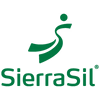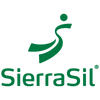How To Use a Tennis Ball for Sore Muscle Relief

To use a tennis ball for sore muscle relief, to relieve your sore back, calf muscles, feet, hands, shoulders, and thighs takes just a few minutes a day.
Thanks to the power of myofascial release, a tennis ball is your new best friend when your lower back starts to ache or when you feel some tension and discomfort in your feet.
Just as a massage helps work out the stiffness and knots in your muscles, you can do the same with a simple tennis ball. The great thing about using a tennis ball to relieve your muscle and joint tightness and discomfort is that it costs nothing, and you can treat yourself whenever you need it.
What is Myofascial Release?
Myofascial release is a type of massage and physical therapy that works to relieve tightness and discomfort in your myofascial tissues. Myofascial tissues are the tissues that support and surround your muscles.
These myofascial tissues are the tissues that get tight, cramp, ache, or feel stiff. Myofascial release applies pressure to the trigger points in your myofascial tissue, gently allowing your muscles, tendons, and ligaments to relax, releasing tension and tightness.
Often, myofascial release is done by your massage or physical therapist. Your physical therapist may place his thumb on a spot on your thigh, for example, and ask you to breathe in deeply and then bend your leg or move your leg gently.
The process of applying pressure and gently moving, activates the trigger point, allowing the tissues to relax.
Anyone who is experiencing tightness and stiffness can benefit from myofascial release. However, this kind of treatment can be expensive and hard to fit into an already busy schedule.
This is why using a tennis ball for myofascial release is an ideal option. In fact, even if you’re not feeling any muscle tightness or stiffness – you can benefit from a quick daily tennis ball massage routine.
How to Use a Tennis Ball to Relieve Your Sore Muscles

To use a tennis ball to relieve your sore muscles and perform a myofascial release, do the following:
- Start slowly.
- Listen to the signals your body is giving you.
- Don’t push too deeply.
- Remember that deeper is not necessarily better.
- Establish a regular routine, using the tennis ball in the morning or evening.
Read on for specific step-by-step instructions on how to use a tennis ball for myofascial release in your back, feet, shoulders, calf muscles, and thighs.
Remember that it’s easy to go too deep with the tennis ball – start slowly and apply only gentle pressure. If you do have questions about myofascial release with a tennis ball, talk to your massage or physical therapist.
How to Use a Tennis Ball for Back Relief
To use a tennis ball for upper back relief, do the following:
- Place 2 tennis balls on either side of your spine where you feel the tension.
- Gently lie down on the 2 tennis balls.
- Slowly move your upper back so that the tennis balls gently massage your upper back.
- Do this for up to a minute. Remember to breathe, deep breathing helps to encourage the release.
To use a tennis ball for lower back relief, do the following:
- Place 2 tennis balls side-by-side between your buttocks and ribs.
- Gently lie down on the 2 tennis balls.
- Bend your knees and keep your feet flat on the floor.
- You can optionally move your hips from side-to-side to enhance the myofascial release.
- Do this for up to a minute. Remember to breathe, deep breathing helps to encourage the release.
How to Use a Tennis Ball for Aching Feet
To use a tennis ball for aching feet, do the following:
- Start barefoot.
- Take 1 tennis ball and place it on the floor.
- Gently place the arch of your foot on the tennis ball and roll the tennis ball along the length of your foot.
- Do not place all of your weight on the tennis ball. You do not want to stand on the tennis ball.
- Do this for up to a minute on each foot. Remember to breathe, deep breathing helps to encourage the release.
How to Use a Tennis Ball to Relieve Tight Shoulders
To use a tennis ball to relieve tight shoulders, do the following:
- Place 1 tennis ball on the floor.
- Gently lie down on the tennis ball so that the tennis ball is behind your shoulder blade.
- Gently move your shoulder and arm – moving it along the floor and lifting it up in the air in a waving motion.
- Do this for up to 3 minutes for each shoulder. Remember to breathe, deep breathing helps to encourage the release.
How to Use a Tennis Ball to Loosen Tight Calf Muscles
To use a tennis ball to loosen tight calf muscles, do the following:
- Sit down on a carpeted floor or on a yoga mat.
- Stretch your legs out in front of you.
- Bend one leg placing your foot flat on the floor.
- Place 1 tennis ball beneath your calf muscle on the leg that is extended. The tennis ball should be at the top of your calf muscle, close to but not underneath your knee.
- Place both hands on the floor and use them to gently raise your buttocks off the floor.
- Gently move your extended leg so the tennis ball moves up and down your calf muscle.
- Do this for up to a minute on each leg. Remember to breathe, deep breathing helps to encourage the release.
How to Use a Tennis Ball to Loosen Tight Thighs
To use a tennis ball to loosen tight thighs, do the following:
- Place 1 tennis ball on the floor.
- Lie down on the tennis ball so that the tennis ball is underneath your thigh.
- Gently move your leg so the tennis ball moves along your thigh.
- Do this for up to a minute on each thigh. Remember to breathe, deep breathing helps to encourage the release.
Using a Tennis Ball to Relieve Muscle Soreness

Everyone experiences muscle soreness and tightness. Maybe you’ve started a new exercise routine and are experiencing DOMS in your legs or you’ve been injured and are slowly returning to regular exercise.
Regardless of the source of the muscle and joint tightness and discomfort, know that you can relieve this tension naturally and safely. Remember that when you use a tennis ball to relieve your muscle and joint soreness, it’s important that you start slowly and gently.
Along with using a tennis ball for myofascial release, we encourage you to learn more about inflammation in the body and how it contributes to stiff and sore joints.



